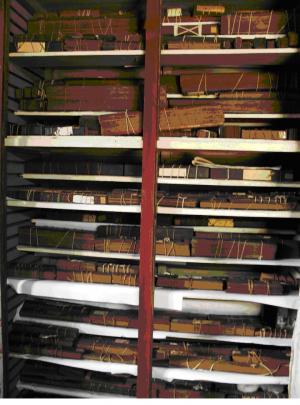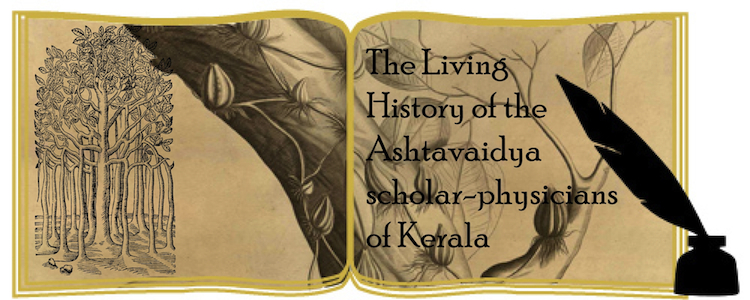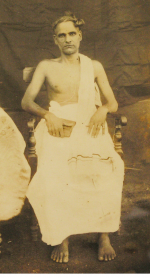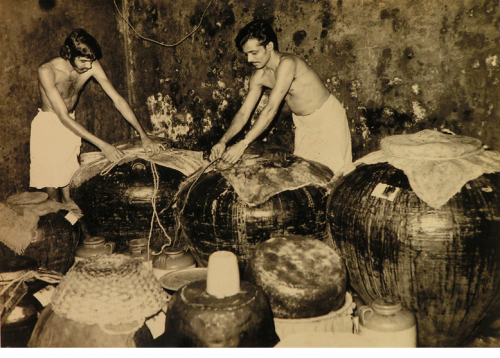The living history of the Ashtavaidya scholar-physicians of Kerala

Many Asthavaidya households are repositories of valuable and centuries-old palm-leaf manuscripts collections
“The unique Ashtavaidya Ayurvedic tradition of Kerala evolved as a result of the centuries-old interaction between text-based Ayurveda practices and regional folk medical practices utilizing Kerala’s rich medicinal flora. Ashtavaidyas, repositories of the unique confluence of these health traditions, have contributed to Kerala’s rise as a prominent center for Ayurveda practice today”, says Spudich.
Of the original 18 Ashtavaidya families trained in the classical tradition only few remain in practice. Spudich believes that the changes in the certification requirements for Ayurveda physicians in India today have not helped perpetuate this ancestral system of transmission and practice. As a result this centuries old scholar-physician tradition, an invaluable resource of Indian medical knowledge, is about to die out.
Several preliminary conversations between Spudich and two of the Ashtavaidyas of Kerala, Olassa Chiratamon Narayan Moos and Vayaskara Aryan Moos during 1997-2001, highlighted the importance of documenting this vanishing scholar-physician tradition for future scholars. Therefore, starting in 2009 Spudich and Menon conducted extensive interviews with Vaidyamadham Cheriya Narayanan Namboodiripad, the doyen of the remaining Asthavaidyas of Kerala. Vaidyamadham Namboodir, says Spudich, is a unique repository of Ayurveda theory, practice, history and lore. Spudich and Menon also interviewed his brother, junior physicians of his family and other associates. The object of the interviews was to record from these scholar-physicians details of their training in the art and science of healing, their practices and the culture of spirituality that is an essential part of the Ashtavaidya tradition.
The conversations record, directly from, so to speak, the mouth of the gurus (guru mukham), their education and training, the unique practices of their lineage, issues facing traditional medical practice and their perspectives on the culture of modern Ayurveda. These representatives of a rich tradition are obliged to adapt, and in some case even abandon, their ancestral practices to respond to the expectation of contemporary health care, says Spudich. The primary casualty of the new context has been their traditional method of learning by long years of apprenticeship. With the end of such a guru-shishya learning tradition the transmission of lineages that produced these scholar physicians and the continued application of many potent therapies that were part of individual lineages are also being lost.
Also being lost is a unique aspect of traditional practice of the Asthavaidyas: that the therapy and medicines prescribed by them took into consideration particularities of each individual patient. The limitations of the current education system and requirements of the standardizations for medicinal preparations do not allow such individualized therapy, say Spudich.The Ashtavaidya physicians interviewed by Spudich and Menon made a strong case for a novel paradigm for public health that integrates Ayurveda in a co-operative medical culture where traditional Indian medical systems and biomedicine work together to form a dynamic and valid health care system. India, with its centuries-old indigenous medical systems and a strong presence of biomedicine is uniquely placed to pioneer such a medical revolution.
The interviews were video recorded and translated into English from Malayalam and edited and annotated. The videos, related photographs and printed material from the interviews will form an archive at the NCBS and will be available to scholars of Indian traditional health systems. Excerpts from the edited interviews will be published as a monograph on, “Living History of Indian Medical Knowledge: The Ashtavaidya Tradition of Kerala”. The monograph will place the Ashtavaidyas tradition in its historical and culture setting. It will also elaborate the essentials of the theory and practice of the Ashtavaidyas with references to Ashtangahrdayam, their source book.




Comments
That was very informative and
Hi Naveen, Thanks for your
Hey man,thanks for the
Post new comment